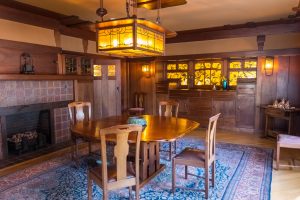History Comes To Life In Your Minneapolis Duplex

Gamble House, Pasadena, Calif.
When I was in high school, the best way to ace my history teacher’s final exam was to memorize the timeline of American history and it’s dominant eras and themes to the point where I could write the whole thing out in longhand.
In the many years since, one of those eras seems to come up over and over again as having much more of an impact on the course of history than all the eras; the Industrial Revolution.
Between the 1870’s and early 1900’s, the United States and the world were profoundly changed by:
-
Widespread use of steel, electricity, and petroleum.
-
Mass production techniques like assembly lines.
-
Urbanization and the rise of industrial cities (e.g., Chicago, Pittsburgh, Detroit).
-
Rapid expansion of railroads, telegraph and telephone communication.
-
Major immigration waves providing cheap labor.
- A shift from an agrarian to a manufacturing economy.
And all of those things gave birth to duplexes.
As tractors came to farms, and jobs and excitement boomed in the city, there was an urgent need for housing for all the farm kids leaving home for an opportunity.
Duplexes were an efficient use of land, as there were two, not one units on a lot. They were also more economic to build, as they shared a foundation, roof, and wall, which helped reduce construction costs.
Then, like now, they helped owners build long-term wealth with rent from one unit defraying the expenses of the owner who often lived in the other. They also provided a way for multiple generations or extended families to live together without having to share space.
In fact, duplexes were so popular that even companies like Sears and Montgomery Ward sold duplex plans or house kits through their catalogs. Here, the influence of the Craftsman era’s commitment to craftsmanship, simplicity, and natural materials is common. In the Twin Cities, it this image that comes to mind for many of us when we hear the word duplex.
While the Great Depression and World War II thwarted most housing construction of any kind, the duplex boom started once again in the first ring suburbs as an affordable alternative to starter homes. This is where we find the side by side duplexes.
Given the housing shortages we’re facing today, as well as the economic evolutions sure to come to the economy through innovations like artificial intelligence, it may be time for history to repeat itself. Duplexes may be exactly the solution we’re looking for.

